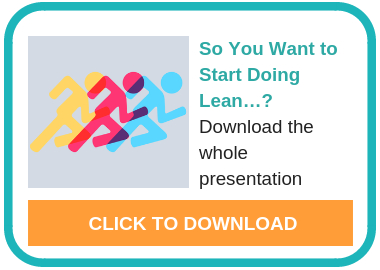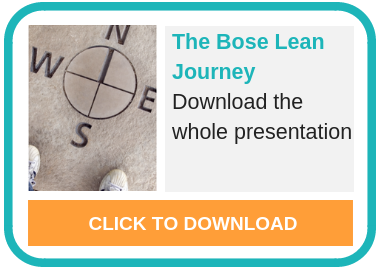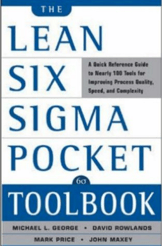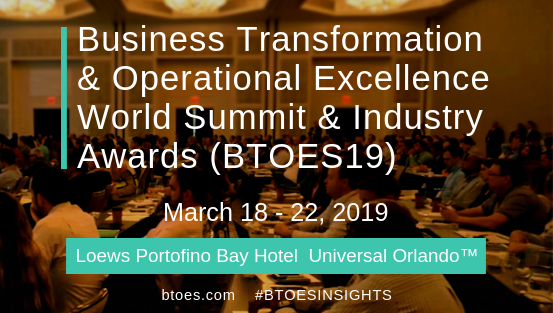What is Lean?
A Definition of Lean
Lean is a methodology of continuous improvement with the goal of reducing waste by eliminating unnecessary steps within a process. Steps which don't add value from the customer's point of view are considered waste.There are 7 types of waste:
- Over-production against plan
- Waiting time of operators and machines
- Unnecessary transportation
- Waste in the process itself
- Excess stock of material and components
- Non value-adding motion
- Defects in quality
Whilst Lean sometimes is only seen as a set of tools for continuous improvement, a Lean mindset should be encouraged throughout the whole company. Promoting Lean at all levels will lead to a much better result. For more definitions click here.
According to Nick Ruhmann Lean is comprised of three organizational aspects:
- A common philosophy
- A common set of techniques and methods
- A common set of rules for managing & developing people and processes
To read his whole article click here.
Kaizen
What is Kaizen?
Kaizen is Japanese and stands for "Continuous Improvement". It refers to activities aiming for the implementation of positive, ongoing changes at the work station. In other words, it is a strategy that involves all employees from every company level to work together and proactively, with the goal of achieving regular, incremental improvements to the manufacturing process.
Kaizen puts emphasis on the significance of continuous improvement. It is not enough to undertake changes once. Organizations have to make an effort in continuing improvements repeatedly. Numerous companies have applied Kaizen's concept and strategy in order to increase employee productivity, reduce costs, and improve the overall customer experience.
If you want to learn more about Kaizen and Gemba click here.
Top 10 Kaizen Books
The 10 Best Kaizen Books
Kaizen : The key to Japan's competitive success
Masaaki Imai
Level: Introductory
"A comprehensive handbook of 16 Kaizen management practices that can be put to work. KAIZEN uses more than 100 examples in action and contains 15 corporate case studies."
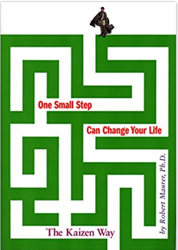 One Small Step Can Change Your Life
One Small Step Can Change Your Life
Robert Maurer
Level: Introductory
A cornerstone for all Kaizen Practitioners, this book serves as a practical and inspirational guide to incorporating Kaizen and its powerful principles into one's daily life.
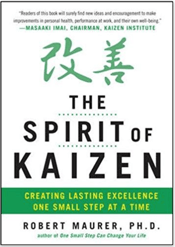 The Spirit of Kaizen: Creating Lasting Excellence One Small Step at a Time
The Spirit of Kaizen: Creating Lasting Excellence One Small Step at a Time
Robert Maurer
Level: Introductory
Filled with practical tips and ready-to-use tools for managers, innovators, and entrepreneurs, The Spirit of Kaizen is the essential handbook for a changing world. You’ll learn how to think outside the suggestion box, remove mental blindfolds, manage stress with one-minute exercises, and handle rising health-care costs.
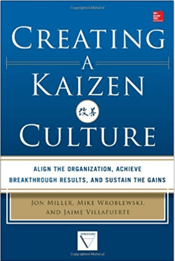 Creating a Kaizen Culture: Align the Organization, Achieve Breakthrough Results, and Sustain the Gains
Creating a Kaizen Culture: Align the Organization, Achieve Breakthrough Results, and Sustain the Gains
John Miller, Mike Wroblewski, Jaime Villafeurte
Level: Moderate Experience
Co-written by leaders at the Kaizen Institute, Creating a Kaizen Culture explains how to enable an adaptive, excellent, and sustainable organization by leveraging core kaizen values and the behaviors they generate.
View the full List of the 10 Best Kaizen Books here.
Origins of Lean
Origins of Lean
Lean is not a new methodology but in the last years it gained more and more importance to businesses in order to achieve Operational Excellence. It originated in manufacturing in Japan with the Toyota Production System (TPS) which combined many best practices of other companies with the goal to increase competitivity. TPS influenced many following methodologies like Six Sigma.
According to the Lean Enterprise Institute the development of TPS is credited to Taiichi Ohno, Toyota’s chief of production in the post-WW II period. Beginning in machining operations and spreading from there, Ohno led the development of TPS at Toyota throughout the 1950s and 1960s, and the dissemination to the supply base through the 1960s and 1970s. Outside Japan, dissemination began in earnest with the creation of the Toyota- General Motors joint venture—NUMMI—in California in 1984.
The concepts of just-in-time (JIT) and jidoka both have their roots in the prewar period. Sakichi Toyoda, founder of the Toyota group of companies, invented the concept of jidoka in the early 20th Century by incorporating a device on his automatic looms that would stop the loom from operating whenever a thread broke. This enabled great improvements in quality and freed people to do more valuecreating work than simply monitoring machines for quality. Eventually, this simple concept found its way into every machine, every production line, and every Toyota operation. Read more.
Learn more about the Toyota Production system in this video by Toyota Forklift:
So is Lean only used in manufacturing? In the contrary! Lean is great for every kind of business to increase consumer-satisfaction, team-work and profit.
Back to top
Lean Principles
The 5 Lean Principles
According to Womack and Jones, there are five key lean principles: value, value stream, flow, pull, and perfection:
- Specify value from the standpoint of the end customer by product family.
- Map the value Stream: Identify all the steps in the value stream for each product family, eliminating whenever possible those steps that do not create value.
- Create flow: Make the value-creating steps occur in tight sequence so the product will flow smoothly toward the customer.
- Establish pull: As flow is introduced, let customers pull value from the next upstream activity.
- Seek perfection: As value is specified, value streams are identified, wasted steps are removed, and flow and pull are introduced, begin the process again and continue it until a state of perfection is reached in which perfect value is created with no waste.
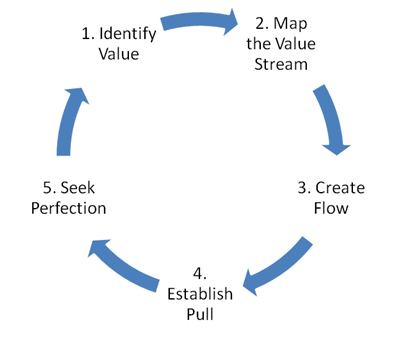
The five-step thought process for guiding the implementation of lean techniques.
Image copyright 2016, Lean Enterprise Institute, Inc. All rights reserved.
Lean Six Sigma
What happens if we combine Lean and Six Sigma?
Combining two powerful methodologies can only create an even more powerful tool. Six Sigma also is a methodology of continuous improvement but instead of achieving this through reducing unnecessary steps, this methodology focuses on reducing waste through diminishing variations within the process. This can be accomplished by the implementing DMAIC, a Six Sigma sub-methodology. DMAIC is the abbreviation for:
- Define: define the problem in order to solve it.
- Measure: measure all of your available data as well as take a more detailed look into your processes.
- Analysis: perform analysis of your findings and figure out the problem's root.
- Improvement: once you analyzed your data, find possible solutions and implement them.
- and Control: ensure to maintain your new implemented process.
Lean and Six Sigma are two different approaches to reach the same goal. Besides reducing waste they aim to minimize costs and maximize efficiency. Although they are different they work best hand in hand. Click here to download the new Free 5S Guide to 'learn the principles of 5S/6S philosophy and how to successfully implement it in any facility'.
.
Why Lean Six Sigma
A critical view on Lean Six Sigma
Every methodology has its advantages and disadvantages. Many different sources agree that the Lean Six Sigma Methodology is meant to fail and and that it would be a waste of time to implement it. At the same time many businesses and companies "insist that Lean Six-Sigma programs have been wildly successful in their companies". We are wondering if Lean six sigma really works. Why are the opinions so different and what are the reasons for failures when using this methodology? Could it be "a lack of cohesion on the Operational Excellence Journey"? Read more about Joseph Paris thoughts on: 'Lean Six Sigma Must be A Waste of Time and Energy, or; Why You Need Lean Six Sigma'
Maybe we should just abandon continuous improvement? In his article, in the Harvard Business Review, Ron Ashkenas states: "Absolutely not! It has created a tremendous value and still drives competitive advantage in many companies and industries. But perhaps it's time to nuance our approach." We should think about how and where it makes sense to implement it in the organization, so that it doesn't discourage creativity. We should also consider eliminating and disrupting processes instead of improving them. And finally, as the Lean methodology has to become part of the culture we should always look at how a change will impact the dynamics in the company.
Lean Six Sigma vs Lean
Accoring to Nick Ruhmann:
"The Lean community is divided into 2 groups with different views on Lean:
- The "Lean Crowd" (lean is a complete and total way of doing business)
- The Lean Six Sigma Crowd (lean gives us extra tools to use)
Lean is comprised of three organizational aspects:
- A common philosophy
- A common set of techniques and methods
- A common set of rules for managing & developing people and processes
So if you look at how this works in Toyota, you could conceive of a diagram like the following:
Common Philosophy:
- you can't show respect without solving problems together and
- you don't get continuous improvement without mutual respect.
Common Techniques and Methods
This is the common "TPS Temple" or "House of Lean" that gets depicted. It's an expression of the technical way Toyota approaches production.
A Foundation of Stability, made possible through Heijunka (Leveling), Standardized Work, and Kaizen.
Two equal pillars of "Just in Time" and "Jidoka"(Built in Quality).
Just this technical aspect shows how lean would NEVER "make defects faster".
You can only increase process velocity at the rate for which quality and stability will allow - each serves the other.
Common Managerial Rules
This perspective actually comes from Steven J. Spear, a senior lecturer at MIT Sloan School of Management. His research into Toyota's ability to "outrace their competition by out learning them" lead to the formation of 4 basic capabilities and 4 basic rules that Toyota and other highly effective organizations operate under:
The Four Capabilities:
- Understand Good Process Design (How to make problems visible)
- Solve Problems when and where they occur (Stop and Fix)
- Share learning laterally across the organization (Yokoten)
- Leaders are Teachers (Teach others how to do 1 -3)".
Click here to read the whole article by Nick Ruhmann.
Starting Lean
How to start doing lean
After learning all about what Lean and Six Sigma is, what can we do with this knowledge? Once that we decided that Lean is the right Methodology for us and that we want to implement it we still don't know how to start, right? Click here to learn more about an expert's approach to starting with Lean and download his presentation on the topic:
- Ways to kick it off depending on who told you to do it
- Create a structure that minimizes the number of yearly evaluations you have to do
- Picking projects, assuming you have a choice
- Calculating ROI (I have no idea, I just use lots of big words and talk fast)
- Different ways to roll this out and not lose your job
Test your knowledge on Lean and answer this Question: We are a small company with approximately 150 employees, 3 manufacturing locations and 5 nonwoven processing lines. The nonwoven process is a continuous-flow process as opposed to assembly. The decision has been made to embark on a lean/continuous-improvement initiative for our company.
There is no one in our company who specifically has lean experience. Do you have any advice on the best way to begin this journey? The company is open to using outside consultants. Compare your approach to Larry Fast's explanation in his article on 'What is the best way to begin a Lean or Continuous Improvement Journey'.
Implementing Lean
10 top tips for implementing lean successfully
This presentation on '10 Top Tips for Implementing Lean Successfully' offers the 10 most important things any organization new to lean needs to put in place as soon as they get back to their office to set themselves up successfully on their lean journey.
- The basics: department structure
- Culture change
- Buy-in
- Training employees: who to train, what information and content to provide
- Visibility
- Making Lean, and Process Improvement the culture
- Change Management: from the front line to the C Suite
Watch this video to learn about 'Integrating Lean and Agile to Transform New Product Development'.
5 Tips for Introducing Lean to Administrative Functions
While many will still argue that "this may work on the shop floor but not in my office," happily there is an increasing number of real-life examples that are proving this wrong. Introducing lean to administrative functions is possible with these 5 Steps:
- Take inventory of the key processes you are responsible for and determine who the key users, i.e., your customers, are.
- Interview key customers on each process to find out which ones they regularly use, what works well and what doesn't.
- Do you have the information necessary to define the problem and begin to problem solve?
- Form a team of your staff experts, including a knowledgeable user, and begin.
- Importantly, in addition to speaking directly with your customers, don't forget to create a forum right up front for open discussion and input from your staff members.To learn more about the 5 steps click here.
Lean and Company culture
Leading Culture Change through Lean Leadership
As mentioned before Lean shouldn't only be seen as a methodology or a set off tools to achieve continuous improvement and reduce waste, it is also very important to integrate it into the company's culture. What does this mean? Changes always affect the whole company. It is not possible to only change processes and expect no other consequences, positive and negative. Lean has to be promoted and implemented throughout the whole company. It has to become a mindset and part of the company culture. This also means that Managers have to change their way of thinking and adapt Lean Leadership.
Lean Leadership means moving away from traditional concepts of management, where the manager gives instructions, only focuses on short-term results and the team members are expected to do their tasks. In Lean Leadership the manager has a strategic focus, he is at the workplace, asks questions and mentors his team members who do standard work, improve processes, measure results and get the training they need. If you want to learn more about leading culture change through Lean Leadership click here.
"Lean also means creating a culture of structured problem solving.To do so, we have to understand how systems drive behaviors. Enterprise level culture is really the behaviors of people at the unit or local level. Essentially, the principle follows; In order to engineer the culture we want in our organization, we have to find a way to change specific behaviors.
Remember that a behavior is an action that can be videotaped. For example, a nurse or physician washing their hands before examining a patient is a behavior linked to reducing infections. With this in mind, it only makes sense that behaviors are driven by the systems we create. The behavior around structured problem-solving could be anything, from:
- Writing out the actual problem in clear terms
- Graphically displaying the barriers
- Using a “fishbone” to identify root causes
- and so forth.
We can drive those desired behaviors by creating a system made of literal items such as an A3 sheet of paper that requires a written problem statement and root causes, which would drive a Kaizen event where teams can graphically denote the issues they are faced with.
It comes down to the systems. Creating systems that drive a behavior around structured problem solving will create a culture of structured problem solving. Once you create this specific culture you have the system to design a different culture or modify the existing culture through the use of systems to drive behaviors."
To learn more about 'A Systematic Approach to Creating a Culture of Structured Problem Solving' in the following video:
"Whilst implementing Lean and building a Lean culture we shouldn't forget that the Toyota Way is rooted in the concept of "Respect for People" and would never:
- overburden employees
- create an environment of fear
- think of people as "heads" or "variable resources"
Real lean knows that you cannot truly have continuous improvement, everywhere, all the time IF you don't respect people as people.
Real lean knows that the best way to build / show respect for people is to trust them, listen to them, guide them, thereby - building better people.
In this way, people are not a variable cost you want to flex up and down - but a fixed cost, or even a capital investment that continues to appreciate. Like a chunk of gold, that will increase in mass if you only appreciate it - or shrink if you ignore it."
Learn more about 'FINDING A "REAL" LEAN CULTURE JUST BY CARING' by Nick Ruhmann.
Case Study
Top Case Study
Courtesy of Bose Corporation, 'The Bose Lean Journey' offers a demonstration of the Lean Enterprise Maturity Model as an inflection point in the Lean Enterprise journey at Bose Corporation:
- Where are we now? - understanding the current state
- Setting a multi-year target condition - a clear vision for the future
- The value is in the struggle - allow people to own it
- Strive for true behaviour change - not just a number
- Encourage Autonomy
Click here to download the full presentation.
For more case studies click here.
Top 10 Lean Six Sigma Books
10 Books You Should Read
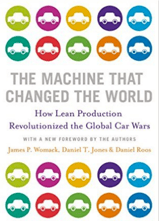
The Machine That Changed the World
James P. Womack, Daniel T. Joners & Daniel Roos
Level: Moderate Experience
"The book that coined the term “Lean” based on the outcomes of more than 5 years of study of the Japanese automobile industry by MIT. Womack, Jones and Roos thoroughly document the whole of the Toyota Production System, pinpoint the advantages of Lean manufacturing over the prevailing mass-production system used in the western world at the time, and correctly predicted the rise of Lean manufacturing principles, not just in automobile manufacturing, but in any value-creating endeavor."
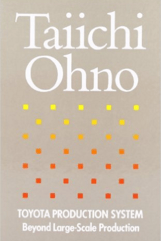
Toyota Production System: Beyond Large-Scale Production
Taiichi Ono
Level: Moderate Experience
"Combining his candid insights with a rigorous analysis of Toyota's attempts at Lean production, Ohno's book explains how Lean principles can improve any production endeavor. A historical and philosophical description of just-in-time and Lean manufacturing, this work is a must read for all students of human progress. On a more practical level, it continues to provide inspiration and instruction for those seeking to improve efficiency through the elimination of waste."
The Lean Six Sigma Pocket Toolbook: A Quick Reference Guide to Nearly100 Tools for Improving Quality and Speed
Michael L. George, David Rowlands, Mark Price, John Maxey
Level: Essential Reading
"The Lean Six Sigma Pocket Toolbook is today's most complete and results based reference to the tools and concepts needed to understand, implement, and leverage Lean Six Sigma."
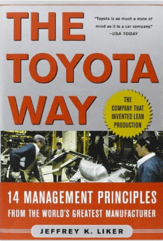 The Toyota Way
The Toyota Way
Jeffrey Liker
Level: Moderate Experience
"In The Toyota Way, Dr. Liker shifted the focus away from superficial tools and techniques of the production system and onto the 14 key principles that define the Toyota style of management. In doing so, the book was the first to articulate the true source of Toyota’s success in a format available and understandable to the masses."
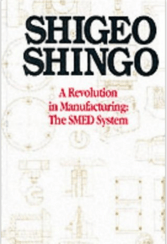 A Revolution in Manufacturing: The SMED System: Single-minute
A Revolution in Manufacturing: The SMED System: Single-minute
Exchange of Die System
Shigeo Shingo
Level: Expert
Written by the industrial engineer who developed SMED (single-minute exchange of die) for Toyota, A Revolution in Manufacturing provides a full overview of this powerful just in timeproduction tool. It offers the most complete and detailed instructions available anywhere for transforming a manufacturing environment in ways that will speed up production and make small lot inventories feasible.
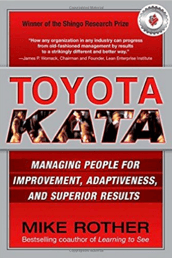 Toyota Kata
Toyota Kata
Mike Rother
Level: Expert
"Of all the texts on Lean and continuous improvement, Toyota Kata achieves what no other book before it has fully accomplished: translating Lean into a set of simple, practical routines, organized around improvement and coaching, that can be readily and effectively practiced at all levels of an organization."
Click here to see the full List of Top 10 Lean Six Sigma Books.
Top 10 OpEx Blogs
Never stop learning!
To help you get the most information as possible and to find exactly the information you need right now we listed our Top 10 OpEx blogs. Take a look at some of the best blogs for Operational Excellence news, thought-pieces & inspiration:
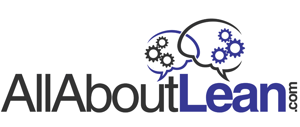 All About Lean
All About Lean
AllAboutLean.com blogs on the different aspects of lean manufacturing and lean administration. The blog has a strong focus is on practicability, although some posts will also delve into theoretical details.
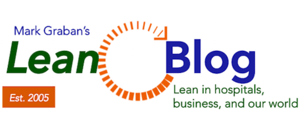 Mark Graban's Lean Blog
Mark Graban's Lean Blog
Lean Blog covers a number of themes about lean that are universal, regardless of industry. This blog led to Shingo Award-winning books including Lean Hospitals: Improving Quality, Patient Safety, and Employee Engagement .
 A Lean Journey: The Quest for True North
A Lean Journey: The Quest for True North
This site is dedicated to sharing lessons and experiences along the Lean Journey in the Quest for True North. The blog also serves as the source for learning and reflection which are critical elements in Lean Thinking.
 Billy's Blog
Billy's Blog
Bill Waddell is a Global Supply chain expert and one of the original Lean Accounting "Thought Leaders". He has over 30 years experience in Manufacturing and Accounting, and is widely regarded as being at the forefront of Lean Manufacturing.
See the full List of Top 10 OpEx blogs.
Top 10 OpEX Video Presentations
Hear from the best in your Industry!
Get all 10 exceptional Video Presentations from the Business Transformation & Operational Excellence World Summit. Hear from the experts of your industry how they discuss various topics concerning operational excellence.
Click here to download a full package in including sessions like:
- NASA: "Transforming the Culture to be More Innovative: A Roadmap for the Future" - Omar Hatamleh, Former Chief Innovation Office
- Bose Corporation: "Engaging Leadership in the Bose Lean IT journey" - Jeff Hastie, Lean Enterprise Leader, Corporate Information Services & David Margil, Global Director, Lean Enterprise
- Coca Cola: "Increasing Customer Satisfaction by Mapping the Customer Journey to Delivering Superior Service" - Ted Revilock, Director of Operational Excellence for Global Shared Services
- Christiana Care Health System: "Predictive Modeling: Applying Operational Excellence Methodologies in Identifying Meaningful Data that Yields Results" - Tze Chiam, Director, Research Informatics
- Ebay: "Debunking Myths: How Operational Excellence Fosters Innovation and Agility" - Zac Jacobson, Sr. Director, Global Business Excellence & Customer Insights
Lean Certification
Get the right Training!
Sometimes books and blogs don't help and you just need to learn it from professionals. You can take lessons and learn about Lean Six Sigma from experts and get certified at the end of the courses.
Like in some martial arts there are three categories of certification called belts:
- yellow belt
- green belt
- black belt
- Master black belt

found on whcawical.org
But not every provider uses the same levels!
There are many different providers, so you can choose the right one for you:
APMG: https://apmg-international.com/product/lean-six-sigma
SimpliLearn: https://www.simplilearn.com/reasons-to-do-six-sigma-certification-article
BQF: https://www.bqf.org.uk/what-we-do/lean-six-sigma-academy/certification/
IASSC:https://www.iassc.org/
But what are the benefits of getting the certified?
It can have a great impact on your future career for many reasons. Being certified can be useful in many different industries and will look great on your CV. It will not only show that you are committed to keep learning but it will also show your analytical skills. It will also improve the business you work in!
According to a survey carried out by indeed.com, the salary for Six Sigma certified individuals routinely break into the $100,000+ pay bracket, and are among the highest-paid professionals globally.
Btoes.com
Business Transformation & Operational Excellence World Summit & Industry Awards (BTOES19). March 18-22, 2019, Loews Portofino Bay Hotel at Universal Orlando Resort®
It also hosts the Business Transformation & Operational Excellence Awards, which showcase globally the most outstanding organizational achievements through the application of Operational Excellence programs.
The summits hosts a number of private forums for C-Level & Global corporate-level leaders as well as business unit heads.
With over 150 speakers, over 100 sessions, 12 Keynotes, 9 Track Themes, 5 parallel tracks, 60+ track sessions, 50 roundtable discussions, 20 Interactive Workshops, 6 Thought Leader Panels, 5 Leaders Boardrooms, 5 co-located events, the Industry Awards Program, Site Visits, 20+ hours of social networking including 2 gala cocktail parties, dinners, numerous group activities, this is the ultimate event to benchmark, network and drive Operational Excellence to the next level.
Quick Links
There is a strong focus on Cultural Transformation, Customer Delight, Sustaining an Operational Excellence program, Need for end-to-end Business Transformation, Keeping up with new technologies/impact of digitalization and Leadership Buy-in & Understanding. We dedicated two tracks to advanced technologies, such as AI, Machine Learning, RPA, Predictive Analytics, Blockchain, Cloud infrastructure etc.
The agenda is designed to encourage active meaningful conversations though all day enhanced networking and interaction opportunities, including
-
All-day Refreshment & Themed Breaks
-
1¼ Hour Hot Breakfast Networking Sessions
-
1½ Hour Hot Plated Networking Lunches with Topic & Industry Sector focussed tables
-
1½ Hour Roundtable Sessions by Topic & Industry Sector.
-
Keynote & Themes Panel Sessions
-
Hosted Welcome Receptions from 5.30pm
-
Expanded more lavish Awards Program
-
Newly launched Night Summit for attendees to meet after dinner
For more information or to discuss the summit in more detail please schedule a call below,


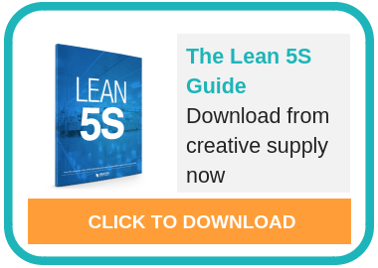
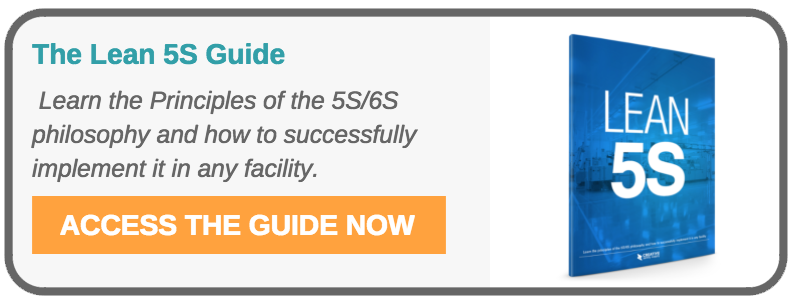
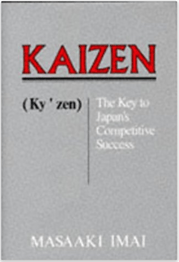
.png?width=473&name=CTA%20LHA%20Lean%20SIx%20Sigma(15).png)
